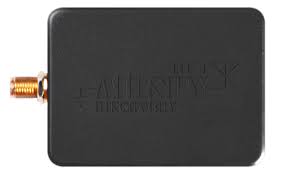
Palomar Amateur Radio Club STEM Experimentation Lab
📡 Introduction To Software Defined Radio
This page aims to provide an introduction to Software Defined Radio for those who may not be familiar with it.
When people think of a radio, they usually picture something like the Yaesu FTDX-10 base station or the portable Sony ICF-2010 Short Wave Radio. The Yaesu FTDX-10 is a modern, very sophisticated base station transceiver that fits on a desk and costs over a thousand dollars. Being so new, it undoubtedly uses SDR techniques in its design. The Sony ICF-2010 is a much older analog radio that was popular for listening to short-wave broadcasts but is still a very competent receiver today.
The SDRs that we use in the STEMLab on the other hand look like these, the RTL-SDR Blog v3 and the Airspy HF Discovery. Both of these are but a fraction of the size, weight and cost of the other radios. The RTL-SDR is about 3.5" x 1" and the Airspy is about 1.75" x 2".

Digital technology has been transforming radio design and construction. Using digital signal processing techniques for much of the signal processing rather than analog circuitry, these SDRs can be much, much smaller than the older radios (granted they don't transmit like the Yaesu FTDX-10). For those sufficiently interested the RTL-SDR is an open-source project so its schematics and hardware designs are made publicly available. That's one reason why there are so many copy-cat designs out there.
The STEMLab's SDR Hardware ⓘ PARC STEMLab SDRs
Along with these inexpensive but capable SDRs there has been ongoing development of numerous software applications that take advantage of them. These continue to evolve and provide us with more and better ways to use our SDRs.
Some SDR Software Info ⓘ SDR Software
Note: PARC does not sell or endorse any products mentioned in these pages.
Information is provided for education and instructional purposes only.